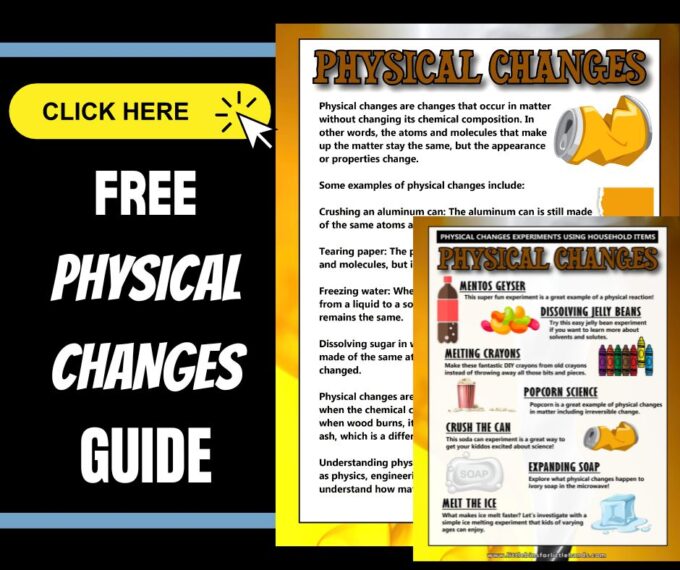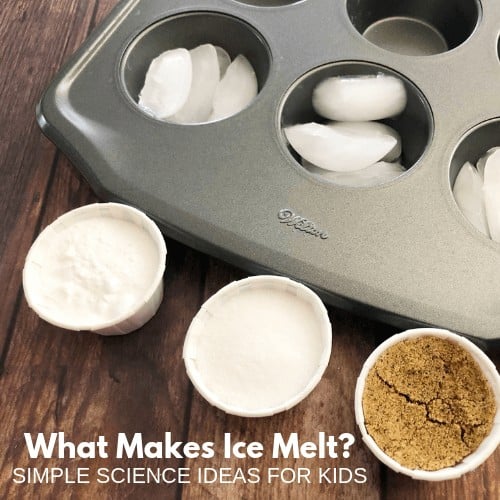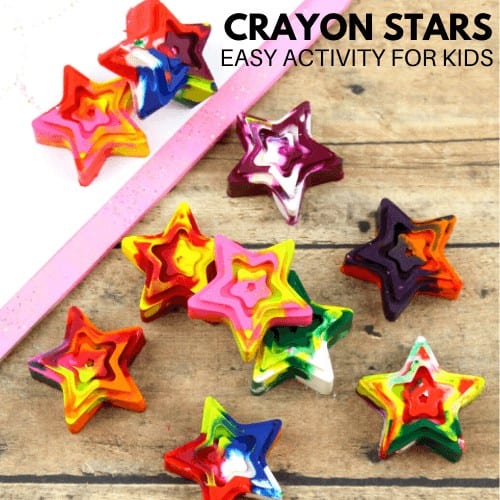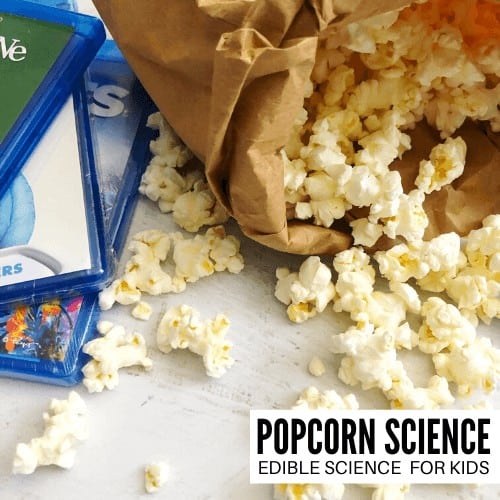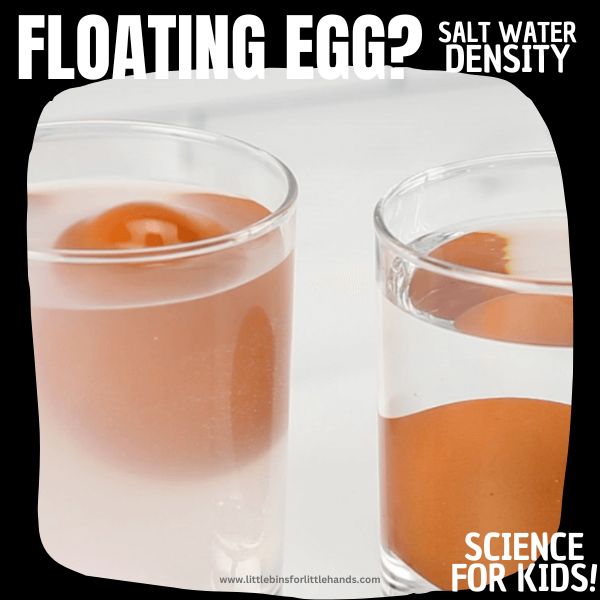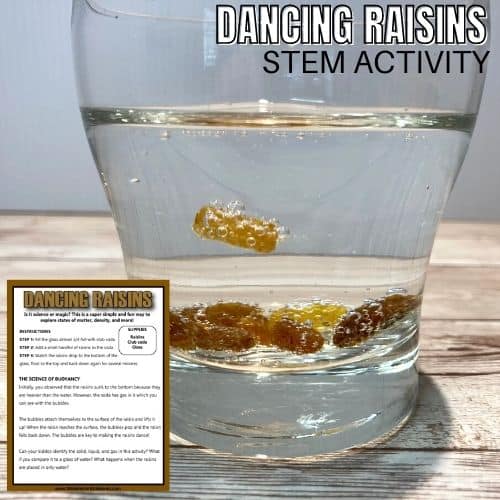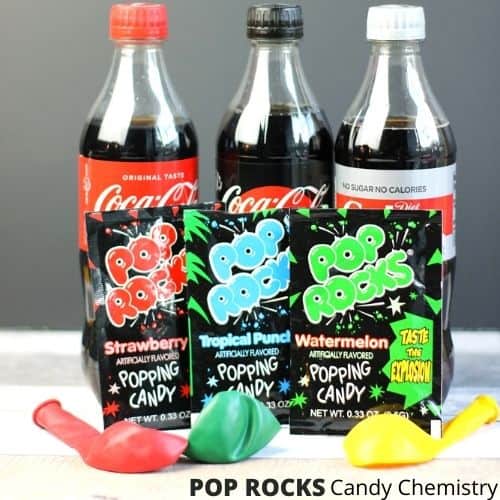What is a physical change? Learn to identify a physical change vs. a chemical change with a simple physical change definition and everyday examples of physical change. Explore physical changes with easy, hands-on science experiments kids will love. Melt crayons, freeze water, dissolve sugar in water, crush cans, and more. Fun science project ideas for all ages of kids!

Chemistry For Kids
Let’s keep it basic for our junior scientists. Chemistry is all about how different materials are put together and what they are made up of, like atoms and molecules… Like all sciences, chemistry is about solving problems and figuring out why things do what they do. Kids are great for questioning everything!
In our chemistry experiments, you will learn about chemical reactions, acids and bases, solutions, crystals, and more! All with easy household supplies!
Encourage your kids to make predictions, discuss observations, and re-test their ideas if they don’t get the desired results the first time. Science always includes an element of mystery that kids naturally love to figure out!
Learn about what it means for a substance to undergo a physical change with one of these hands-on experiments below, and our simple physical change definition for kids.
What Is A Physical Change?
Physical changes are changes that occur in matter without changing its chemical composition. In
other words, the atoms and molecules that make up the matter stay the same; no new substance is formed. But there is a change in the appearance or physical properties of the substance.
Physical properties include:
- Color
- Density
- Mass
- Solubility
- State
- Temperature
- Texture
- Viscosity
- Volume
For Example…
Crushing an aluminum can: The aluminum can is still made of the same atoms and molecules, but its size has changed.
Tearing paper: The paper is still made of the same atoms and molecules, but its size and shape have changed.
Freezing water: When water freezes, its appearance changes from a liquid to a solid, but its chemical composition remains the same.
Dissolving sugar in water: The sugar and water are still made of the same atoms and molecules, but their appearance has changed.
Understanding physical changes is important for many fields, such as physics, engineering, and materials science. It helps us understand how matter behaves and how to manipulate it.
Physical vs. Chemical Change
Physical changes differ from chemical changes or chemical reactions, which occur when the substances are changed into one or more new substances. A chemical change is a change in the chemical composition of the matter. In contrast, a physical change isn’t! Learn more about chemical change.
For example, when wood burns, it undergoes a chemical change and turns into a different substance, ash, which has different atoms and molecules from the original wood.
However, if a piece of wood is chopped up into smaller pieces, it undergoes a physical change. The wood looks different, but has the same substance as the original wood.
SUGGESTION: Fun Chemical Reaction Experiments
Physical changes are often reversible, especially if it is a phase change. Examples of phase changes are melting (changing from a solid to a liquid), freezing (changing from a liquid to a solid), evaporation (changing from a liquid to a gas), and condensation (changing from a gas to a liquid).
A great question for kids to ask is… Can this change be reversed or not?
Many physical changes are reversible. However, some physical changes are not easy to reverse! Think about what happens when you shred a piece of paper! While you haven’t created a new substance, the change is irreversible. Chemical changes typically are irreversible.
Everyday Examples Of Physical Change
Here are 20 everyday physical change examples. Can you think of any more?
- Boiling a cup of water
- Adding milk to cereal
- Boiling pasta to make it soft
- Munching on candy
- Chopping vegetables into smaller pieces
- Grating an apple
- Melting cheese
- Slicing a loaf of bread
- Washing clothes
- Sharpening a pencil
- Using an eraser
- Crushing a box to put in the trash
- Steam condensing on the mirror from a hot shower
- Ice on the car window on a cold morning
- Mowing the lawn
- Drying clothing in the sun
- Making mud
- A puddle of water drying up
- Trimming trees
- Adding salt to a pool
Physical Change Experiments
Try one or more of these easy physical change experiments you can do at home or in the classroom. What physical changes can you observe? For some of these experiments, there may be more than one.
Crushed Can Experiment
Observe how changes in atmospheric pressure can crush a can. A fun and easy experiment to try!
Dissolving Candy
Add candy to water for a fun, colorful physical change. Also, investigate what happens when you add candy to other common household liquids.
Freezing Water Experiment
Learn about the freezing point of water and what kind of physical change happens when you add salt to water and freeze it.

Ivory Soap Experiment
What happens to ivory soap when you heat it in the microwave? Observe a cool physical change in action!
Making Paper
Make these paper Earths from old bits of paper. The appearance of the paper changes with this easy recycling paper project.
Making Soap
Not only is making soap from a melt and pour glycerin base a fun example of physical change, you also end up with a cool surprise at the end.
Melting Ice Experiment
What makes ice melt faster? 3 fun experiments to investigate what speeds up the process of ice changing from a solid to a liquid.
Melting Crayons
Turn a box of broken and worn down bits of crayon into new crayons with a fun example of physical change. Follow our step by step instructions to melt the crayons, and make them into new crayons.
Paper Towel Art
What kind of physical change do you get when you add water and ink to a paper towel? This also makes for a fun and easy STEAM (Science + Art) activity.
For another “arty” example of physical change, try salt painting!
Popcorn In A Bag
Science you can eat! Make up some popcorn in a bag, and find out what type of physical change makes popcorn pop.
Rainbow In A Jar
How does adding sugar to water cause a physical change? It changes the density of the liquid. See it in action with this colorful layered density tower.
Salt Water Density Experiment
Similarly, explore how adding salt to water changes the physical properties of the water. Test it out by floating an egg.
Skittles Experiment
Use your skittles candy and water for this classic skittles science experiment that everyone has to try! Why don’t the skittles colors mix?
Solid, Liquid, Gas Experiment
A simple science experiment that is great for younger kiddos. Observe how ice becomes a liquid and then a gas.
What Absorbs Water
A simple experiment for your preschoolers! Grab some materials and objects, and investigate what absorbs water and what doesn’t. Physical changes you may notice; changes in volume, texture (wet or dry), size, color.
Physical Changes That Look Like Chemical Reactions
The science experiments below are all examples of physical change. While, at first, you might think a chemical reaction has occurred, all that fizzing action is a physical change!
Dancing Raisins
While it might appear that a chemical change is occurring, a new substance is not formed. The carbon dioxide, which is found in the soda, creates the movement of the raisins.
Diet Coke and Mentos
Adding Mentos candy to Diet coke or soda makes for the best explosion! It is all to do with a physical change! Check out our Mentos and soda version for younger kids as well.

Pop Rocks and Soda
Mix Pop rocks and soda together for a frothy, fizzing physical change that can blow up a balloon.
More Helpful Science Resources
Here are a few resources to help you introduce science more effectively to your kiddos or students and feel confident when presenting materials. You’ll find helpful free printables throughout.
- Best Science Practices (as it relates to the scientific method)
- Science Vocab
- 8 Science Books for Kids
- What Is A Scientist
- Science Supplies List
- Science Tools for Kids
Science Experiments By Age Group
We’ve put together a few separate resources for different age groups, but remember that many experiments will cross over and can be re-tried at several different age levels. Younger kiddos can enjoy the simplicity and hands-on fun. At the same time, you can talk back and forth about what is happening.
As kiddos get older, they can bring more complexity to the experiments, including using the scientific method, developing hypotheses, exploring variables, creating different tests, and writing conclusions from analyzing data.
- Science for Toddlers
- Science for Preschoolers
- Science for Kindergarten
- Science for Early Elementary Grades
- Science for 3rd Grade
- Science for Middle School
Printable Science Experiments Pack
If you’re looking to grab all of our printable science projects in one convenient place plus exclusive worksheets and bonuses like a STEAM Project pack, our Science Project Pack is what you need! Over 300+ Pages!
- 90+ classic science activities with journal pages, supply lists, set up and process, and science information. NEW! Activity-specific observation pages!
- Best science practices posters and our original science method process folders for extra alternatives!
- Be a Collector activities pack introduces kids to the world of making collections through the eyes of a scientist. What will they collect first?
- Know the Words Science vocabulary pack includes flashcards, crosswords, and word searches that illuminate keywords in the experiments!
- My science journal writing prompts explore what it means to be a scientist!!
- Bonus STEAM Project Pack: Art meets science with doable projects!
- Bonus Quick Grab Packs for Biology, Earth Science, Chemistry, and Physics


